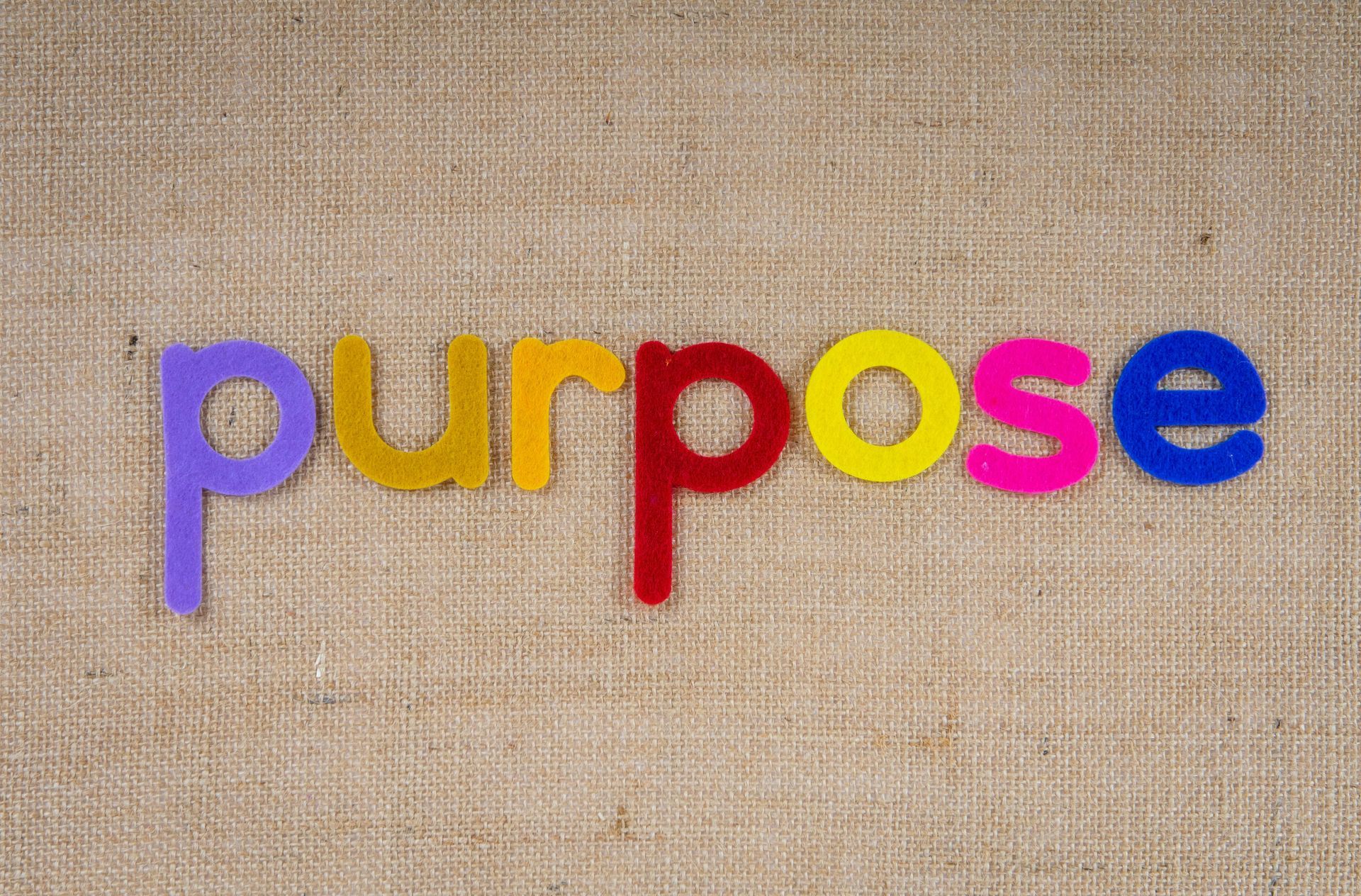some thoughts about the future

My dad died last week. Two days before his 80'' birthday party. He was an engineer and liked to plan things meticulously so he either didn't want to turn 80 or didn't want an 80th birthday party. Which it was we will never know, but 'd surmise It was the latter. He was born in 1944, just before the end of World War 2, and midway between the birth of Joe Biden, in 1942, and Donald Trump in 1946. He was a baby boomer, just like Donald Trump, who some will argue represents the best, and even more will argue, the worst, of the boomer generation. He was the third of 4 children and the only boy. Of course, being the only boy, he was considered at the time to be the most intelligent of all his siblings and was reared - by his mom, dad and all of society - to succeed in life. His sisters had an easier task simply to find a well-groomed, well-bred, and successful husband, just like my dad was being groomed to be. In the time between completing matric and finding a husband they were sent off to grooming school aka secretarial college. Lo and behold, they all were married and had a bun in the oven before graduation day. Except for my dad's youngest sister who struggled to fall pregnant, so she had to work for a big chunk of her adult life- or at least until she tell pregnant at the age of 36. Her husband would have preferred that she stayed at home -because that's what women did - but she didn't much like cooking, hated cleaning, and quite frankly was quite intelligent. In 1952, at the age of 8, my dad was sent off to boarding school to learn how to become a man. He went through initiations to become tough and strong and dominant. He was taught that to be successful he must play rugby and be good at maths and science, and most certainly not follow a creative path because that would make life hard. Luckily for him he was good at maths and science and rugby resulting in him being shipped off to university in 1962 to study civil engineering. A few years later, in 1967, he was fortunate enough to meet my mom, an innocent farmers daughter from the Eastern Cape. She was exceptionally pretty, an extremely accomplished tennis player, head prefect and most importantly she was perfectly well bred to find an accomplished husband. Being the driven, ambitious and motivated lady that she was she was married before she was legally allowed to be, requiring her dad to sign her marriage certificate. Which he VERY proudly did. At 22 she had her first child and her second, being me, at 24. She and my dad bought their first house when she was 25 and they were living in their forever home by the time she was 30. My mom had four siblings. Her eldest brother didn't have the same dad as her. My grans first husband was killed in WW2 so he couldn't inherit the farm that came with my gran’s second marriage to my grandfather, my mom's dad, so he was shipped off to the USA to study journalism. My mom was the second eldest and her next sibling, a sister that was a year younger, was the rebel in the family because she went off to university to study teaching, followed by her medical degree, followed by her master's degree in anaesthetics, eventually becoming a world renowned anaesthetist at Red Cross Children Hospital and later receiving a professorship at the University of Cape Town. She only married at the age of 43 and never had any children of her own, although she was an outstanding stepmother to 3 boys. My mom's younger brother received the family farm, because that's what the rules said, and her younger sister managed to find a good man and settle down before completing her nursing qualification. I was brought up in the height of apartheid in South Africa - In the seventies and eighties - I didn't know what apartheid was, but my journalist uncle became an editor for the Star newspaper and was considered a left wing liberal journalist. As a result, he was always being followed by the secret service which is how I learnt about apartheid. I asked my dad why black cars were always outside our house when my uncle visited and he told me it was so that the government could keep tabs on him because he knew too many people that were considered enemies of the state. When I asked him, what apartheid was, he asked me if I thought Lettie - the black lady that looked after and nurtured me - a very strong willed, intelligent fiery, protective saint that I adored with all me being, should be equal to me. I was taken aback. I didn't know that she wasn't equal to me and said that I would he the luckiest boy alive if ever had the opportunity to be anything as close to magnificent as she was. He very simply said "never forget that my boy". Thanks to Lettie and my mom I learnt the strength and humility of women at a young age. In the late eighties, my brother and I were both in high school and my mom declared one day that she was bored of being a part-time secretary. Her dad said hallelujah and bought her a red briefcase for her new, undefined business venture, and IRONICALLY told her that she was always destined for more and that he was proud of her. And my dad - a man born into a man's world where women were there to serve their husbands and look after the family - encouraged her all the way- to the start line and beyond, always being her biggest supporter. It is probably for this reason that they were together for 57 years. Because men didn't want their wives to work in those days and the man of the household always had the final say. Their word was gospel. But not my dad, he encouraged her, supported her and was never threatened by her success. I know this doesn't sound too remarkable these days - but the boomer generation were the architects of divorce and infidelity and broken families - because women liberation movements started gaining traction, giving women a voice and fighting for equality - and most men couldn't accept the challenge. Now my dad was a pretty decent guy but in reality, societal consciousness - our values, beliefs and behaviours - were shifting and he was intelligent enough to adapt. Largely because he loved my mom dearly and didn't want to lose her! But many of his generation didn't, and still haven't, desperately trying to force their will on the world. Still believing that they are the patriarchs of society, still hanging onto power, promising to restore the world to what it was - think Trump promising to "Make America Great again" or Biden still thinking that he can run for a second term of presidency, or even Jacob Zuma wanting to regain control of South Africa. Our world has changed. South Africa has changed. The American dream was rooted in racism, sexism and every other "ism", as was South Africa. We might feel that the present is tough but when it comes to liberation, freedom, equality and diversity, we are way better off than we've ever been. But let's be honest. It's still a man’s world. And to succeed in a man’s world, well, you must behave like a man. Or do you? Luckily, the winds of change are upon us. Masculine leadership traits – assertiveness, decisiveness, competitiveness, independence, dominance, strength, power and control- got us to where we are today. But they aren't going to take us where we need to go tomorrow. Masculine leadership has led to decades of breakthrough innovation, improvements in living standards, poverty reduction, step changes in life expectancy, economic growth, wealth creation, and so the list goes on, but, as we all know, life is about debits and credits, and any excess is countered with a corresponding deficit, in this case being… - Materialism - Consumerism - Over consumption - Reckless exploitation of our planet's resources - Destruction of ecosystems - Global warming - Climate change - Growing divide between the rich and poor - Depression - Anxiety - Suicide Masculinity defines a successful life as "those that reach the top". It's a dog-eat-dog competition to get to the top and the closer to the top you get, the more you need to flaunt your success. But not everyone can reach the top. In fact, nobody ever reaches the top because every time you reach the next strata, you open a whole new level of competition. A whole new level or competition opens a whole new level of materialism which opens up a whole new level of consumerism. And the deficit gap just widens even more. Enough is NEVER enough. Earth overshoot day is the day in the year that we have consumed more of our planetsresources than can be replaced in that year. In 1970, our annual consumption equalled our annual replenishment rate, by 2020 we had a five-month deficit, in other words bythe end of July 2020 we had already consumed more than we could replenish in that year. Our planet doesn't have the resources to continue on a path of unbridled growth and consumerism. Or a path of greed and hedonism. Besides this excessive consumption, our world order is also at risk of being disrupted by artificial intelligence. By 2029. the smartest "being" in the world will be a machine. By 2045 Al will be 1 billion times smarter than humans. We might develop the machines but we won't be controlling them because they are programmed to learn through human "on-line" behaviour, which, as we all have experienced is not always indicative of the best of human behaviour. Who is going to nurture and guide these machines to be a force for good in the world? Our limited intelligence is destroying our planet. We are intelligent enough to create but not intelligent enough to understand the impact of our creations. To be specific, masculine intelligence and masculine leadership Is destroying our planet. And we are all to blame because society has bred men to believe that they are more intelligent than women, as well as convincing women that they are less intelligent than men. As a case in point, when men and women are asked to estimate their OWN intelligence in an SEI test, that means Self Estimated Intelligence test, men throughout the world across different age, ethnic and cultural groups, always estimate their intelligence to be higher than that of their female counterparts. It's called the male hubris and female humility effect. Hubris means you have exaggerated pride and self-confidence. Humility means you are modest or have a low view of one's importance. So, if there is ONE thing that men can teach women, it's that bullshit baffles brains. Seriously though, the only thing that men have over women, that has been proven in research time and time again, is confidence and self-esteem. And it all starts at home. In various social research studies where parents are asked to estimate the intelligence of their children, sons are rated significantly more intelligent than daughters. And when children are asked whether their mother or father is more intelligent, fathers are rated as more intelligent than mothers. This finding has been replicated repeatedly across the world. The same applies to self-esteem. Unsurprisingly, women rate their self-esteem significantly lower than men, with this difference emerging early in adolescence. The problem is that it becomes a self-fulfilling prophecy: if you think you can't, you won't. When girls undervalue their intelligence in school, they tend to choose less challenging course content which limits their education and career choices after school. We need to lift girls' aspirations if they are to go on to solve the complex problems our society needs them to solve. It starts early with gendered parental biases – and expectations - of intelligence and self-esteem between boys and girls. Wouldn't it be nice if we could build the confidence of girls and women to a level where they believe in themselves and are free of doubts? Wouldn't it be nice if we took this a step further and embraced feminine values and virtues to make our world a better place? Wouldn't it be nice if we empowered women to be the best of themselves and for men to shamelessly embrace their feminine side? Because, gosh, we need it now more than ever. I was recently listening to a podcast with Mo Godwat who wrote the book "Scary Smart" and the last question he was asked was "what are the failures you cherish the most?" and his answer was "I have failed for many, many years to empower my feminine side. It's my biggest failure ever. It's the world's biggest failure ever”. He went on to say "our world is suffering from hyper masculinity. We've turned our world into a world of doing. A lot of stuff. Stuff that we don't need. Stuff that doesn't nourish. And it's because we have capitalized so much in our modern world on skills like analytical thinking, linear thinking, strength, discipline, control. All of these are masculine traits. Masculine and feminine are not man and woman but rather traits that correlate to masculinity and femininity. When you over-do masculine traits, they work against you. Strength is good but if you over-do it, you become aggressive. Linear thinking is good but if you over-do it, you become stubborn. We have ignored the feminine qualities that are life-giving, nurturing, Intuitive, creative, playful, empathetic. We've created a world that is so lacking in all of these traits that humanity is on the wrong side of being. We are not showing our good side. We are not able to nourish, nurture, empathise. And to make matters worse, as we empower women today we force them to become masculine, we force them to become competitive, we force them to become tough. Because the game is played that way”. The rules of the game need to change. After centuries of masculine dominated world order, it’s time to lead like a woman. Because women are more likely to: - see the big picture and consider the long-term impact of their actions - use the power or Intuition and creativity to solve big world problems - embrace the power of collaboration through other people, organisations and competitors, rather than seeing them as a threat - empathise, listen and understand differing viewpoints and find solutions that benefit all - develop and grow the leaders of tomorrow, including machines and artificial intelligence, to work for the benefit of mankind rather than its destruction - be more agile, adaptable and resilient - be more approachable and open to feedback, building trust and credibility - and finally, they are more able to prioritise the well-being of people - and quality of life - ahead of ego and materialism The idea of feminine leadership is not intended to create a binary opposition between men and women as leaders, but to recognise and value different leadership styles and to recognize that men, women, and those that identity themselves differently, can have qualities associated with feminine leadership. However, given that it's still a man's world, it begs the question "how do we create the space to embrace feminine leadership?" I am not going to pretend that this is easy. I worked for a staunchly masculine organization that values authority, hierarchy, autocracy, power and dominance to get things done, and it has been highly successful. The exco is staunchly middle-aged white men, bar one female that's head of HR. The result is monochrome conformity, a one-dimensional view of leadership and culture which permeates throughout the entire organization. But it's a model that's working so why change what's not broke? Therein lies the biggest threat to the change that we need. Because it is broke. Because our measures of success are wrong. But there is light at the end of the tunnel: younger generations are streaks ahead of older generations when it comes to embracing both their feminine and masculine traits. As much as we might be critical of woke culture, it embraces diversity and encourages people to be their truest selves, outside of societal expectations. there is a societal shift away from materialism being signs or success to the impact you can have by being your truest and best self human consciousness is shifting from "me" to "we" where success at the expense of others is not considered success at all. organisations are becoming more purpose led and see "better business" as a strong point of difference rather than a legislative tick box. "sustainable" business processes that do less harm to our world are no longer good enough. Business now needs to regenerate our world and fix the damage that has been done. and the best part is that the world's biggest economic opportunity is regenerative business process and product re-engineering These are all virtues of feminine leadership. As I've repeatedly said, there has never been a better time to lead like a woman. For ladies, I encourage you to be your authentic selves. Don't become a man to win in a man's world. Rather be a Jacinda Ardern or an Angela Merkel than a Donald Trump or Joe Biden or Vladimir Putin. Jacinda Ardern decided to step down from being prime minister of New Zealand in her early forties because she felt she had done what she needed to do and wanted to spend more time with her family. Donald Trump is 78 and re-running for the American presidency to "make America Great Again" and Joe Biden honestly thought that he could be in the running for a second term or presidency when he is losing his mind. For men, stop being so fearful. Stop thinking about what you had. Stop thinking about what you’re losing. Think about what you can gain. Embrace your feminine side, embrace diversity, embrace difference, embrace togetherness. Be part of the change. Lead from the front. Lead from within. Start seeing the kaleidoscopic beauty of a diverse and united future From a personal point of view, driving leadership and cultural change in a staunchly masculine organisations is incredibly difficult, but it is possible. What I can tell you is that once the ball starts rolling it picks up seed and becomes very difficult to stop. This is very simply because the broader organisation, especially younger generations and marginalized groups, which make up the majority of organizations in South Africa these days, are so desperate for change that you just have to open the door slightly and they will throw it wide open. I can offer you a little bit of advice, but my list is by no means exhaustive: First and foremost, support each other. Encourage each other. Don't compete. Just because you made it to the top, doesn't mean that you can suppress your compatriots. Your job is still to grow, nurture and develop them. Prepare them for your job. Prepare yourself for your next job. Real change means giving more of yourself. Emotionally, physically and intellectually. You will be the tallest tree that catches the most wind. It is not easy and takes incredible drive determination and belief in yourself and your mission to relentlessly follow it through. There will be many obstacles along the way and there will be many people that are threatened by you. Win them over through the power of empathy. Understand their fears and concerns and find ways to help them see what they can gain rather what they will lose. Remember that it's not a war! Hyper masculinity thrives on competition, strength and dominance. Don't play them at their own game because you will lose. Find male allies that can drive change from within. They have more opportunity than anyone to influence, engage and open minds. You will be surprised how many have simply adapted to the environment they’re in but can still see it for what it is. Sometimes they just need a little nudge. For men that are in leadership positions, embrace diversity in your teams, and encourage others to do the same. This doesn't just mean inviting them into your home and obeying your rules but being prepared to say it's our home and changing the rules to truly represent your new family. The fastest way to drive positive and long-lasting change is to embrace difference in thought and opinion. Remember that real success can only be realized by working together. You will achieve so much more through the power of collaboration, a skill that women are so much better at than men. And finally, have patience. But never take the foot off the pedal I dare you to be brave enough lead like a woman.

I often get asked if “vision” and “mission” statements are still relevant in today’s business world – or perhaps remnants of a bi-gone business era – and whether they have been usurped by “purpose”? If they still have a role to play, how are they reconciled with a company’s purpose in a manner that will tell a simple and concise story, providing the guiding light to a more desirable future state. The biggest failure many companies make is writing complicated transformational strategies that capture a plethora of ideas but don’t have a single thread holding them all together, making them difficult to understand and near impossible to execute. I like to say that your “vision” grounds you. It grounds you because it puts a stake in the ground with regards to a new future state that you are striving towards. “Vision” answers the “what” question – what type of business do you want to be and what do you hope to achieve? Simply put, it is about making a public statement about your future hopes and ambitions. If a company is hoping to expand into adjacent categories, or hopes to broaden its scope, or completely change direction, this is where it is done. As an example, if a fossil fuel company decided that fossil fuels were damaging to the environment and that they were consequently going to invest heavily in clean energy sources, this is where they would state that ambition. Where a vision grounds you in a desired future state, your purpose guides you. It is your moral compass and answers the “why” question - why do you do what you do? Your “why” is not about achieving quarterly sales targets or maximizing shareholder return but rather why your products and services make the world a better place. Purpose is the heartbeat of an organisation and should provide the north star for all decisions, actions and behaviours. Ideally it should be a single-organizing-thought that captures the essence of an organisation’s strategic imperatives, making it clear how they all work together in achieving the organisations ambitions. By way of example, Patagonia’s purpose is to “use business to inspire and implement solutions to the environmental crisis”. As a consequence, they pledge 1% of sales to the preservation and restoration of the natural environment, they design “timeless” clothing so that it doesn’t need to be replaced regularly, they repair clothes for free, they share blueprints for environmentally friendly materials with their competitors, they take back clothes at the end of their life for recycling, and they partner with Ebay to enable the re-use of their clothing through second hand buying and selling. “Mission” drives you. It answers the “how” question – the strategies and tactics that are necessary to realise your vision and purpose. As a company embarks on a shared value journey, it is often useful to divide its mission into 3 categories – profit, people, planet – and cluster its core strategies under these headings, depending on the role they are playing in the company's transformation journey. It helps tell the story in the simplest and most concise manner, keeping shared value at the heart of the story. So, in essence, vision grounds you, purpose guides you, and mission drives you. It’s as simple as that. About the Author: Mike Middleton is a seasoned marketer and business leader. He is the founder and CEO of Marty McFly, a strategy and innovation agency that helps organisation’s and brand’s make better decisions today for a brighter tomorrow.

I hate the word "disruption". Everyone says it. Everyone wants it. Very few actually do it. It’s one of those corpor ate buzz words that makes people feel like they’re coming across as progressive transformational leaders of change. We don’t know what that really means, but it sounds impressive. Rather like the last sentence. Progressive transformational leaders of change. I want to be that. I think. You see, it’s not the word “disruption” that really bugs me, but rather the lackadaisical manner in which people use it. I am a fairly simple guy and I like to know that what people say is what they do. And yet when people say “disruption”, they seldom do it. It’s because disruption is hard. Quite frankly, instead of criticizing the loose manner in which people pander to its glory, I should be applauding the intent that so many have to change the world. Disruption is a gamble. If it was a certainty, everyone would do it because there would be nothing but upside. But it’s never a certainty. That’s what differentiates disruption from a trend. A trend is immediately observable. You can see it happening. You can see consumers engaging with it, trying it, and eventually adopting it. Disruption offers a completely different solution to satisfying an existing problem. Disruption requires a leap of faith into the unknown. It often means putting yourself on the line. Your reputation on the line. Your job on the line. Hence the reason people tend to pay it lip service, but seldom do it. So how do we become confident disruptors? At the heart of disruption is change. Disruption means that you study change through a kaleidoscopic lens – a lens that sees the full spectrum of change from a myriad of perspectives – and you piece together how small sparks of change in one facet of society can ignite a revolution in another. It sounds like hard work – and it is – but its rather like training for a marathon, you don’t start training from scratch before each race but rather build on the efforts of the training for the previous race. Eventually you’ve developed a level of fitness that requires little effort to maintain, providing a foundation off which to flourish, beating your previous highs time and time again. Kodak is an example of a company that didn’t develop a disruptive mindset and tragically paid the price for it. Kodak was founded in 1888 by George Eastman as the “Eastman Kodak Company”. The company democratized cameras, making them available to every household in a portable, convenient and affordable format. For decades, Kodak followed a simple strategy where they sold cameras at low profit margins and consumables, such as film and printing sheets, at high profit margins. This strategy was extremely successful with Kodak becoming one of the most successful companies in the world and was still an S&P 500 company until as recently as 2010. In 1975, Steve Sasson, an electrical engineer at Kodak, invented the digital camera but when he presented the idea to his bosses, they told him to “not tell anyone as that is how you shoot yourself in the foot”. Digital cameras threatened to destroy Kodaks consumables division, which would ultimately destroy Kodak. So rather than disrupting themselves through a far better offering, that could accelerate their growth, they opted to keep things ticking along as they were. Then, in 1988, Japans Fuji Film launched what is considered the first digital camera, the Fuji FujixDS-1P, and Kodak spent the next 10 years trying to convince consumers that the digital camera experience would never replace the feeling of holding and touching a physical photograph. Kodak failed to acknowledge that digital cameras were cheaper, more convenient and offered better quality images…and that no amount of convincing would deter consumers from rapidly adopting the new technology. If Kodak had embraced a disruptive mindset, they would have developed, for lack of a better description, a “change-fitness”, that would have enabled them to use change to accelerate their success rather than hasten their demise. The signals that they were going to be disrupted were in plain sight – rapidly changing technology, access to home computers, the advent of the internet, declining costs of technology, increased consumer mobility, a growing trend for instant gratification – and so the list goes on. They just needed a bit of foresight to use these forces of change to imagine an entirely different future. They didn’t. And the rest is history. So, although disruption has become corporate jargon, it is a corporate necessity. It is hard, and it can make or break todays corporate executives, but if companies develop a change-fitness, and build disruption into their culture, it will be less feared, more embraced, and the catalyst for a brighter future. About the Author: Mike Middleton is a seasoned marketer, futurist, and change agent. He is the CEO of Marty McFly, a strategy and innovation agency that helps companies and brands make better decisions today for a brighter tomorrow.

Nobel Prize winner Milton Friedman wrote a seminal article in 1970 stating that there is only one social responsibility of business, and that is to increase profits. In essence, he claimed that the sole purpose of business should be about a long-term increase in shareholder wealth, and nothing else. Yes, that’s right, the only reason a business should exist, is to make as much money as possible, rather than being concerned about its impact on people or the planet. Unfortunately, this profits-are-everything philosophy caught on and became conventional wisdom. The consequences of the single bottom line paradigm have been dire – from growing inequality, to the destruction of our natural resources, to climate change and global warming. In South Africa, pressing social needs have pushed business to become involved in developing society over the years in a complex interaction with government, challenging Friedman’s prevailing philosophy of ‘the business of business is business’. Foreign companies that elected to operate in the country during apartheid, particularly American businesses encouraged by the Sullivan Principles to invest in critical societal issues, led the way in showing how a business could serve society. Companies acted as donors to projects offered by a robust civil society, and the term ‘corporate social investment’ (CSI) was coined. CSI, in turn, gained further momentum from 2003 as part of the requirements of the Broad-Based Black Economic Empowerment (BBBEE) Codes of Good Practice. Triple bottom line The concept of broader corporate social responsibility (CSR) then evolved, capturing the needs of a business to deal responsibly with all impacts on society, and forming part of a social licence to operate. The King Reports on Corporate Governance further focused South African businesses on the triple bottom line (TBL) – a sustainability framework that examines a company’s social, environmental, and economic impact. John Elkington, who first developed the TBL concept, now argues it has been captured and diluted by accountants and reporting consultants. Is the bewildering range of reporting frameworks providing businesses with tools to greenwash and alibis for inaction? Are we truly capturing purpose and real-world impact? And is much of social investment still based on enlightened self-interest? The pandemic has been a litmus test for many companies, and a clear indicator of how a business pursues its purpose and chooses to fulfil a broader role to serve and sustain the society and environment it operates within. Success or failure in TBL sustainability goals must surely be measured in terms of the wellbeing of our people and the health of our environment, and indeed how we continue to address these in challenging times. Fundamentally, Elkington says we have a hard-wired cultural problem in business, finance and markets, which arguably rears its head even more during a crisis. He says that while business leadership will ‘move heaven and earth’ to ensure that profit targets are met, the same is very rarely true of their people and planet targets. Clearly, the triple bottom line has failed to bury the single bottom line paradigm. It’s time for a reset To truly shift the needle, Elkington says we need a new wave of TBL innovation and deployment. “We must start working toward a triple helix for value creation, a genetic code for tomorrow’s capitalism, spurring the regeneration of our economies, societies, and biosphere.” The B Corp movement, a social movement that is transforming the business world to be a force for good, is gaining momentum and offers a ray of hope. In excess of 3,400 businesses worldwide are now certified as B Corps and are configured around the TBL — dedicated to be not just “best in the world,” but “best for the world.” Understanding all the forces at play that are going to affect the future trajectory of business – whether two or twenty years from now – has become more important than ever, given the fast pace of change of the world we live in. Developing brand and business strategies that are pro human, pro planet and pro shareholder have become more important than ever for continued business success.

For the past 50 years, the primary role of business in society has been to maximise shareholder return, a consequence of Milton Friedman’s seminal article in the New Yor k Times in 1970 in which he stated that “any other use of shareholders money was irresponsible”. Given the current state of the world, with climate change, global warming, depletion of our natural resources, over population, catastrophic pollution and growing inequality to name a few, it feels like the idea of business being a force for good, and playing a bigger role in society beyond financial maximisation, is the obvious thing to do. Unfortunately, many business leaders don’t see it this way. The world of business is about making money and “purpose” is often seen as getting in the way of making money. It’s perceived to be a “feel good” distraction that takes the eye off the ball, costs money, and erodes the carefully crafted and sought-after profit number. This number is the sole purpose many businesses exist, and it is the most significant factor that business leaders are judged on. So, when business leaders see the word “purpose”, their immediate assumption is that it is going to cost them money, making their profit number that much more difficult to achieve. This is where they are wrong Simon Sinek, in his book The Infinite Game, discusses the difference between leaders with an “infinite” mindset versus those with a “finite” mindset. The basic premise is that a business should have the intent of “playing for the long term” and playing for the long term requires an infinite mindset. He argues that the game of business fits the definition of an infinite game, in that there is no predetermined beginning, middle or end. Although certain time frames are agreed for evaluating performance, those time frames merely represent markers in the course of the game, but not the end of the game itself, because the game of business has no finish line. Sinek goes on to argue that to succeed in the “infinite game of business”, we have to stop thinking about who wins and who’s the best and start thinking about how to build organisation’s that are strong and healthy enough to stay in the game for generations to come. Strong and healthy businesses – those that are playing for the long term – are not defined by their quarterly sales metrics. They’re defined by an innate purpose, or reason for being, that is a guiding light for every action, behavior and decision that a business takes. This purpose reminds all stakeholders why they are in business and what their bigger role in society is, beyond financial maximisation. The Patagonia experience Patagonia, the American clothing company that markets and sells outdoor clothing, is driven by a purpose to “use business to inspire and implement solutions to the environmental crisis”. In pursuit of this purpose, they make “timeless” clothing that doesn’t need to be replaced regularly, they repair clothes for free, share the blueprints for environmentally friendly materials with their competitors, will take back clothes at the end of their life to be recycled, and partner with eBay to enable the re-use of their clothing through second hand buying and selling. The company acknowledges that making money is important because the more money they make, the more they can pursue their purpose, and the more they pursue their purpose the greater the impact they can have on the world. As a consequence, they will not sacrifice the pursuit of their purpose for enhanced financial gain. And yet, their pursuit of this purpose has created an extremely strong fan base of loyal customers and employees that share the same ethos, values and vision and this has made them one of the most desirable clothing brands in the world, which has had a far bigger impact on their growth and revenue performance than if they had followed a finite mindset blindly chasing quarterly sales targets. Impact of Covid-19 Covid-19 has highlighted the destructive influence that man has had on our planet and there is more awareness than ever that things needs to change. Prior to the pandemic, consumers were already demanding that companies and brands play a bigger role in society beyond financial maximisation and were increasingly putting their money where their mouth is and supporting brands and companies that were seen to be doing good. Post the pandemic, momentum behind this cause is going to accelerate and businesses will no longer have the choice of deciding whether or not they want to become more purposeful. Consumers will force change with their wallet, supported by governments around the world that are already starting to legislate business policies where business success is evaluated on its profit and people and planet impact. The time for deciding between purpose or profit is long gone. The future of business success lies in figuring out how to do purpose and profit.

SUSTAINABILITY IS INHERENTLY FLAWED Since the onset of the industrial revolution, humans have been the main contributors to earths environmental crisis. From greenhouse gas emissions, ozone depletion and global warming to deforestation, plastic pollution and illegal animal trade, we have managed to wreak havoc on earth. In the past few decades, we started to comprehend the magnitude of our destruction and have tried to become more sustainable. But at this stage of the game, being sustainable isn’t good enough. If we had to calculate humanity’s annual demand for earth’s natural resources in 2020 and compare this to the time it takes for earth to replenish those resources, we would have crossed the threshold of consuming more than can be replenished by 22 August. Meaning that everything consumed between 23 August and 31 December 2020, representing 36% of our consumption, was borrowed. And 2020 was an improvement on previous years, with the pandemic causing a temporary pause in human activity and a slowing down of our destructive tendencies. This date is commonly referred to as “Earth Overshoot Day” and is a simple calculation of humanity’s demand for resources in a year less the amount of ecological resources earth is able to generate in a year. For the past 50 years we have been consuming more than earth can replenish. Which brings me to the flaws of our sustainability efforts. The core premise behind sustainability is “to maintain at a certain level” or “to avoid depletion of natural resources”. In our case, we have been depleting our natural resources for decades and efforts to reduce our ecological footprint aren’t good enough. “Reduction” simply means “do less” …but less harm is still harm. Don’t get me wrong, it is a very good first step, and thankfully we have been on the sustainability journey we have been on, but it still isn’t good enough. Even if we eventually reach an equilibrium of doing no harm, we will still need to repair five decades of damage. Which is why we need to evolve our discussion from sustainability to regeneration. Regeneration refers to the ability to replace, restore and renew. Unlike the intent of sustainability, which is to keep things as they are, the intent of regeneration is to make things better. One of the worlds gurus on regenerative business is Carol Sanford who wrote the book “The Regenerative Business” and she says that she always saw the incompleteness and shortfall of sustainability and felt that a new idea was needed, one that was more than “less bad”. Sanford says that regenerative businesses don’t waste time on trying to solve existing problems because this traps you into trying to improve what is already in the system, and that we have to find revolutionary ways to make things better rather than evolutionary ways to make things less bad. Sustainability initiatives are rooted in trying to fix an existing problem with the consequence that all initiatives are centred around actively trying to do less harm. But doing less harm is not good enough and we need to find solutions that will make things better. Initiatives that will replace, restore and renew. That’s why we need to stop talking sustainability and start talking regeneration. About the author: Mike Middleton is the founder and CEO of Marty McFly, a trends and futures consultancy that helps companies and brands disrupt themselves ensuring they are in business for the long haul.

McKinsey compared the performance of companies that take a short-term view of business versus the dwindling number of companies that take a long-term view. Its findings showed that between the years 2001 and 2014, revenues generated by companies with a long-term view grew, on average, by approximately 47% more and their profits increased by 36% more than companies chasing short term sales targets. Total shareholder return of those companies with a long-term view was systematically greater than those with a short-term view, with a 50% greater chance that they would be amongst the top 10% of companies in terms of shareholder return. Having a long-term view forces companies to think about “why” they are in business, beyond shareholder maximsation, and to realign all their efforts behind their “why”, which often means that their focus shifts from the shareholder to the customer, which ultimately what keeps them in business, and, counterintuitively, benefits shareholders more.

In 2003, the film “The Corporation” was launched posing the very provocative question “if corporations are considered by law to be legal persons, what type of person would they be?" The conclusion was that they would be classified as psychopaths because they impose economic, social and environmental costs on society in the pursuit of commercial profits, and the rules of the game allow it. A key characteristic of a psychopath is that they are extremely ego centric, and their world revolves around them. They engage with people who will further their cause, manipulate them when there’s a spark of dissent, milk them for all they’ve got and then dispose of them when they’re deemed to have no further use. Whether or not corporations are psychopaths is not for me to say, and quite frankly, I have had some amazing years working for various corporations where I have made some amazing friends, stretched myself way beyond my comfort zone and had a lot of fun. But they weren’t all so good and often the ones that tried the hardest to portray an external image of being a “great place to work” were in fact the worst place to work. I recently wrote an article about “lifetime employment” where I discussed “Next Jump”, a company that offers their employees lifetime employment based on the premise that you should treat employees as your family. Charlie Kim, the company founder, believes that parents would never dismiss their kids if they misbehaved or under-performed and would move the world to give them every opportunity to be the best they can be. He says “despite how much we may fight, we can’t get rid of family. We have to make it work”. The article hit a chord with many readers, which I found rather intriguing. It’s not that they want lifetime employment but rather the security that it brings. In the current business climate where employees are treated as disposable commodities, and discarded when their deemed usefulness comes to an end, I can understand why the article piqued interest. If corporations are in fact psychopaths, it makes even more sense. Gallup International releases an annual employee engagement survey which has been highlighting for years that 75% of employees are disengaged at work and that many of these are actively disengaged. Quite scary statistics. So can this be fixed? Yes, but corporations need to be stop focusing on self-interest and start focusing on human growth. They need to stop caring about themselves and start caring about others. They need to shift from being psychopaths to empaths. This means that instead of telling people what to do, they need to define the playing field and allow everyone to use the power of their creativity to figure solutions out themselves. Instead of forcing employees to be pattern followers, they need to foster a culture of being pattern generators. A workforce that is made up of people who can see what needs to be done, and can creatively make it happen, is far more powerful than a workforce that depends on one-way delegation to tell them what to do. The very structure of corporations is setup to foster an environment of control over ownership, from goal setting to performance reviews, feedback systems and reward and recognition programs. It’s a system that breeds uniformity and inhibits diversity, creativity and innovation, all of which are necessary to enhance employee engagement and step change company performance. I turned to Carol Sanford, author of “The Regenerative Business”, to get some alternative ideas on how corporations could foster a culture of motivated and engaged employees. She suggests that if corporations truly want to unleash human potential, they must commit themselves to developing it, not just utilising it, and that the highest source of motivation comes from longing to live a meaningful life to make a significant contribution to something important. To this end, she says that most people practises within corporations are solely for the self-interest of the corporation and not motivating to employees, making them inherently toxic. With this in mind, I thought I would delve into some of these practices and discuss how they might contribute to a lack of employee engagement. Job Descriptions: Job descriptions are based on a pre-conceived idea on what a company thinks they need and are corrosive to initiative and personal motivation. They don’t take into account what an employee can bring to a company, or the human ability to adapt to a changing world. Goal setting: Goal setting is rooted in a self-centred view of what a company thinks it needs to accomplish and dictates what each person needs to do to get there. It seldom follows an empathic approach of understanding what motivates and excites employees, or their inherent creativity and initiative, and how this can be of benefit to the corporation. Feedback: Feedback is often personal projection of the person giving the feedback, encouraging conformity and a single minded perspective on what the right way of doing things is. It also makes people increasingly dependent on others to determine how well they are doing and undermines self-belief, self-motivation, self-management, and an individual’s potential to grow. Performance reviews: Performance reviews are the pinnacle of the people evaluation process, and often the most destructive to employee engagement. They start with the assumption that employees can only get accurate perspectives on how they are doing from others, which takes the locus of control away from themselves. They are mechanical, static and one sided and steer workers closer to standardised ideals, behaviours and results. They force people into a box which inhibits their ability to creatively and innovatively respond to changing conditions. And they often focus on an employee’s weaknesses, rather than celebrating their strengths, which has the ability to shut people down by being demoralising, diminishing and disengaging. A while back I was involved with a company where most of the people discussions at board level centred around whether or not people were a good “cultural-fit”. The leader of the organisation had a very clear view of what type of people he felt were a good cultural-fit and your future in the company was largely determined by whether or not he felt you were congruent with this culture. Skills and competency played far less of a role in determining future success, which was always of concern to me because top talent is hard to find, and they aren’t always the easiest people. I am of the opinion that if you celebrate the good that people bring, and make them feel welcome, they will naturally become a cultural fit. We have all had experiences in our lives where we have not felt welcome, which hasn’t brought out the best in us. And experiences where we haven’t felt welcome and someone has taken us under their wing and unlocked our magic. This evaluation process posed a number of challenges, the most problematic being that many people didn’t really understand how they needed to behave to “fit-in”, other than being really nice to the CEO. In addition, the culture was defined at the top of the organisation and filtered down which didn’t take other perspectives into account, inhibiting the celebration of diversity and alternative views and opinions. And finally, because the culture wasn’t rooted in empathy but rather psychopathy it was always viewed through a one-sided mirror. The CEO couldn’t see that he had a duty to motivate and energise people, as much as they had to impress him. For him to do this meant that he had to be able to stand in their shoes and understand the world from their perspective, so that there could be a meeting of minds, creating unified and diverse perspectives, that could change the world. About the author: Mike Middleton is the founder and CEO of Marty McFly, a futures consultancy that helps brands and organisations make better decisions today for a brighter tomorrow. A tomorrow that is not only good for shareholders but for our planet and people too. He is a specialist in regenerative marketing and business practices which aim to make organisations net positive contributors to society meaning that they give back more than they take out. Previously Mike was the Chief Marketing Officer for the likes of KFC and Mondelez International, across Africa, the Middle East and Europe.

I was reading a Simon Sinek book recently called “Leaders Eat Last”. He makes reference to an ecommerce company called Next Jump that offers employees “lifetime employment”, a concept that I find rather intriguing in today’s world of disposable employees. Next Jump is an ecommerce company that handles loyalty programs for companies like Dell, Intel and Hilton Hotels. Charlie Kim, the company founder, wanted to create a company that “our mothers and fathers would be proud of us for building”. He felt that parents only want the best for their kids and will do everything in their power for them to be the best that they can be. As a result, he introduced a policy of lifetime employment rooted in the belief that parents would never dismiss their kids if they misbehaved or under-performed. He says “despite how much we may fight, we can’t get rid of family. We have to make it work”. A brave move, but it forces leaders to be far more discerning when searching for new candidates and to identify individuals that aren’t just technically proficient but also have the right character and aptitude to be a “forever employee”. In addition, it forces line managers to invest a lot more time and effort into bringing the best out of employees, because they’re all they’ve got. Kim says that “tough love, coaching, even a program to help people find a job elsewhere if they decide the company is not for them are all much more effective but require much more time and attention from the company”. According to Sinek, after the policy was implemented, company performance skyrocketed and the turnover of engineers went from 40% per annum, which was in line with industry norms, to a mere 1%. He says that “people would rather work at a place in which they feel safe among their colleagues and have the opportunity to grow and feel a part of something bigger than themselves than work in a place that will simply make them rich”.

In my previous article, I wrote about the need for the world to shift its focus from sustainability towards regeneration. At the core of the argument was that sustainability is focused on “doing less bad” whereas regeneration is focused on “making things better”. Given the speed at which we are stripping the world of its resources, doing “less bad” is no longer good enough and we need to find disruptive solutions that will undo the damage we have done and start regenerating our world. When John Elkington coined the phrase “triple bottom line” in 1995, his intent was to challenge business leaders to re-think capitalism from a purely money focus to a more holistic view that includes people and planet. Unfortunately, 25 years later he was disillusioned with the manner in which business leaders had embraced the triple bottom line, and the slow pace at which the business world was evolving to become sustainable, so he issued a public recall of the triple bottom line, claiming it had become mere window dressing with business leaders using it to balance trade-off’s rather than doing things differently. He said that “the triple bottom line was never meant to be a mere accounting tool but to rather provoke deeper thinking on how to revolutionise capitalism and its future”. He says that “CEO’s and business leaders will move heaven and earth to hit their profit number but the same is not true for their people and planet targets, meaning that the triple bottom line has failed in its endeavors to bury the single bottom line”. “If cancer is life run riot, then plastic-clogged oceans, obscene wealth divides, the undermining of democracy, and climate-induced societal collapse are symptoms of our current form of capitalism running riot”. One of the key reasons for his decision to recall the triple bottom line was that he felt the concept was suffering from what he calls the “placebo effect”. In essence, he claims that the main impact of the triple bottom line is to make businesses appear to be doing good, which makes us feel a little better, while the real problems remain out of sight, out of mind, and as a result, out of control. Nick O’Donohue, an investor that has advised the Bill and Melinda Gates foundation says that “as long as Corporate Social Responsibility initiatives aren’t fundamentally core to a business, they are unlikely to ever scale or provide lasting solutions to critical social challenges”. Elkington does acknowledge that the triple bottom line has made capitalism more responsible and less destructive, but he says that it now has to become “radically more economically inclusive, socially just and environmentally restorative” and the only way to achieve this is to for the business world to shift its focus from sustainability to regeneration. Unfortunately becoming regenerative is not a simple task. Sustainability is about incremental improvements on existing business practices, processes, products and services making them less damaging to the environment and better for people. Regeneration requires organisations to go back to basics and re-engineer every aspect of their entity so that they can not only undo the damage of the past but also play a role in making things better. This requires suspending the current metrics by which we measure success and introducing a radically new form of capitalism that truly does measure success based on profit delivery, social impact and environmental regeneration. Regenerative organizations understand what their core purpose is and constantly disrupt themselves so that they can deliver against this purpose. They don’t start at the end product and then find ways to deliver it better to consumers, but rather start at the very beginning and look at how they can make better products from scratch that are far better for their customers, the planet and their shareholders. Regeneration is a mindset, an ethos, a culture. It requires large amounts of effort to get going but can transform organisation’s when embedded into their core. If John Elkington had not introduced the triple bottom line, the world would be in a far worse state than it is currently, but the pace of change has not been fast enough and the core metric of business success is still largely the profit number, so Elkington was justified in his plea to have it recalled. Capitalism does need a radical overhaul and incremental improvements are no longer good enough. It’s time for business leaders to heed to his original request “to provoke deeper thinking on how to revolutionise capitalism and its future” and its especially time for the business world to shift its focus from “doing less harm” to “making things better”. In other words, from sustainability to regeneration. Our future depends on it. About the author: Mike Middleton is the founder and CEO of Marty McFly a Futures Consultancy that helps brands and organisations play for the long haul.

